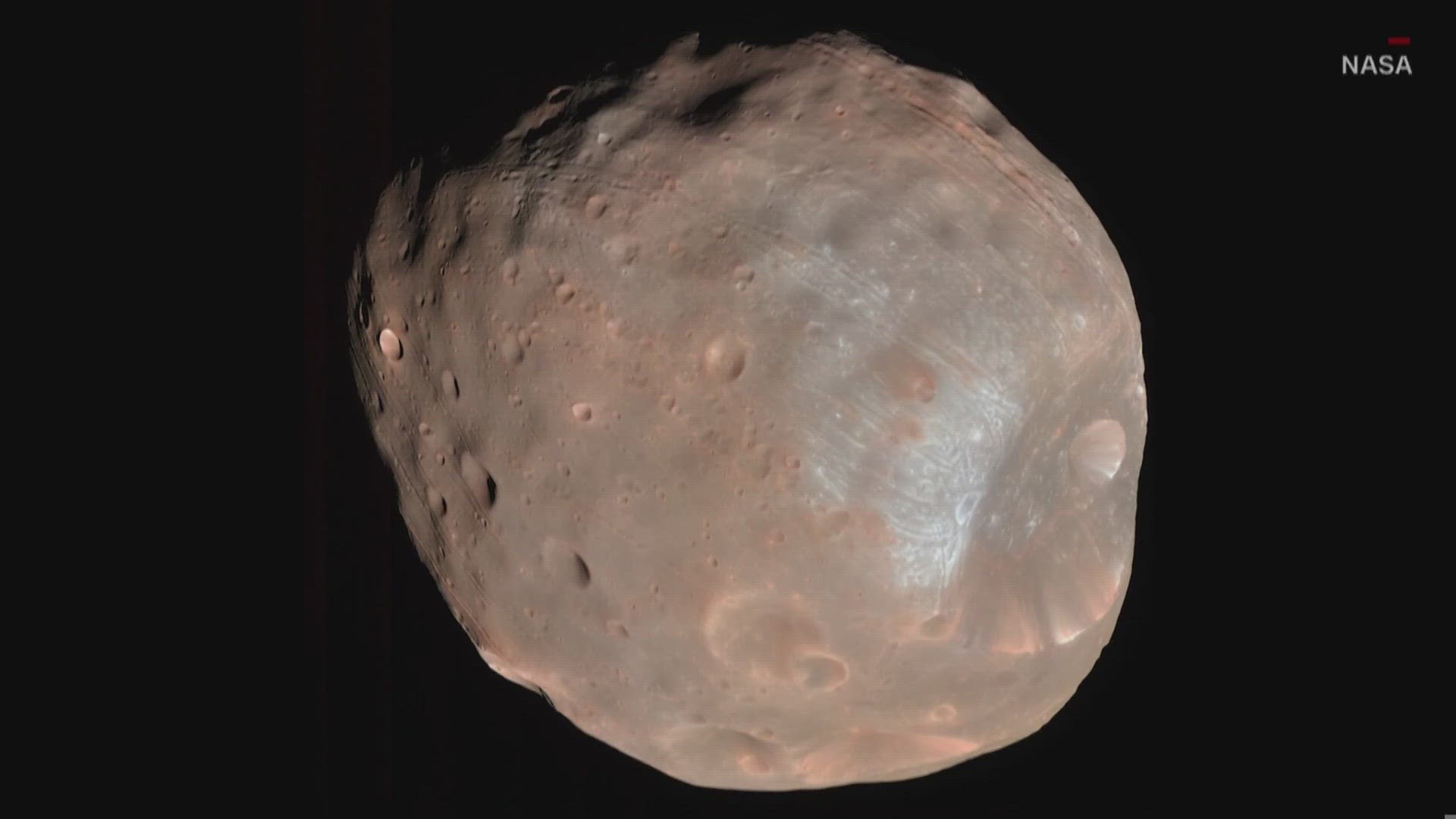FLAGSTAFF, Ariz. — A planetary scientist at Northern Arizona University has been selected to help lead a space mission to collect rocks on a moon of Mars.
“The things that I think are really cool about rocks are the stories that they tell,” said Christopher Edwards, an associate professor in the Department of Astronomy and Planetary Science at NAU. “What minerals are in these rocks can tell us what conditions were like a really long time ago. Millions and billions of years ago.”
NASA awarded Edwards a six-year, $650,000 grant for the Martian Moons eXploration (MMX) mission. An unmanned spacecraft will orbit Mars and land on one of its moons, Phobos, to collect samples and bring them to Earth.
Scientists hope to learn the geological history of the two moons orbiting Mars. The moons are either captured asteroids or pieces of the red planet. Research gathered will also help the MMX team better understand the relationship of other objects in the solar system, how moons tilt the axis of planets, and what the history is of water on Mars.
“There are hypotheses out there that say there was either a lot of water, maybe for a long time, or may (be) punctuated episodic water, and maybe moons are stabilizing factors,” Edwards said. “All of these things kind of play together and help us understand where life arose in our solar system and where life might be able to arise in other solar systems.”
The Japanese Space Agency is leading the mission. It partnered with NASA to involve U.S. scientists to help advance the mission’s science goals and develop a landing site on Phobos. Edwards has experience conducting research on Mars with the Mars Curiosity rover.
One reason Mars and its moons are valuable to researchers is that the rocks exposed on the surface of Mars are more than 3.5 billion years old. It is difficult to find even a single grain that old on Earth, Edwards said.
“Mars provides us this window into early planetary evolution that we just don’t have on Earth,” Edwards said.
The spacecraft is expected to launch in a year and a half. Students at NAU will have an opportunity to contribute to the research, Edwards said.
“Undergraduate students and graduate students can come in and work on NASA programs and in this case, international programs,” he said.
NAU first announced the grant in April.

